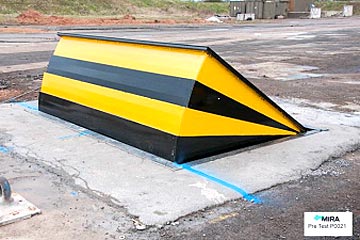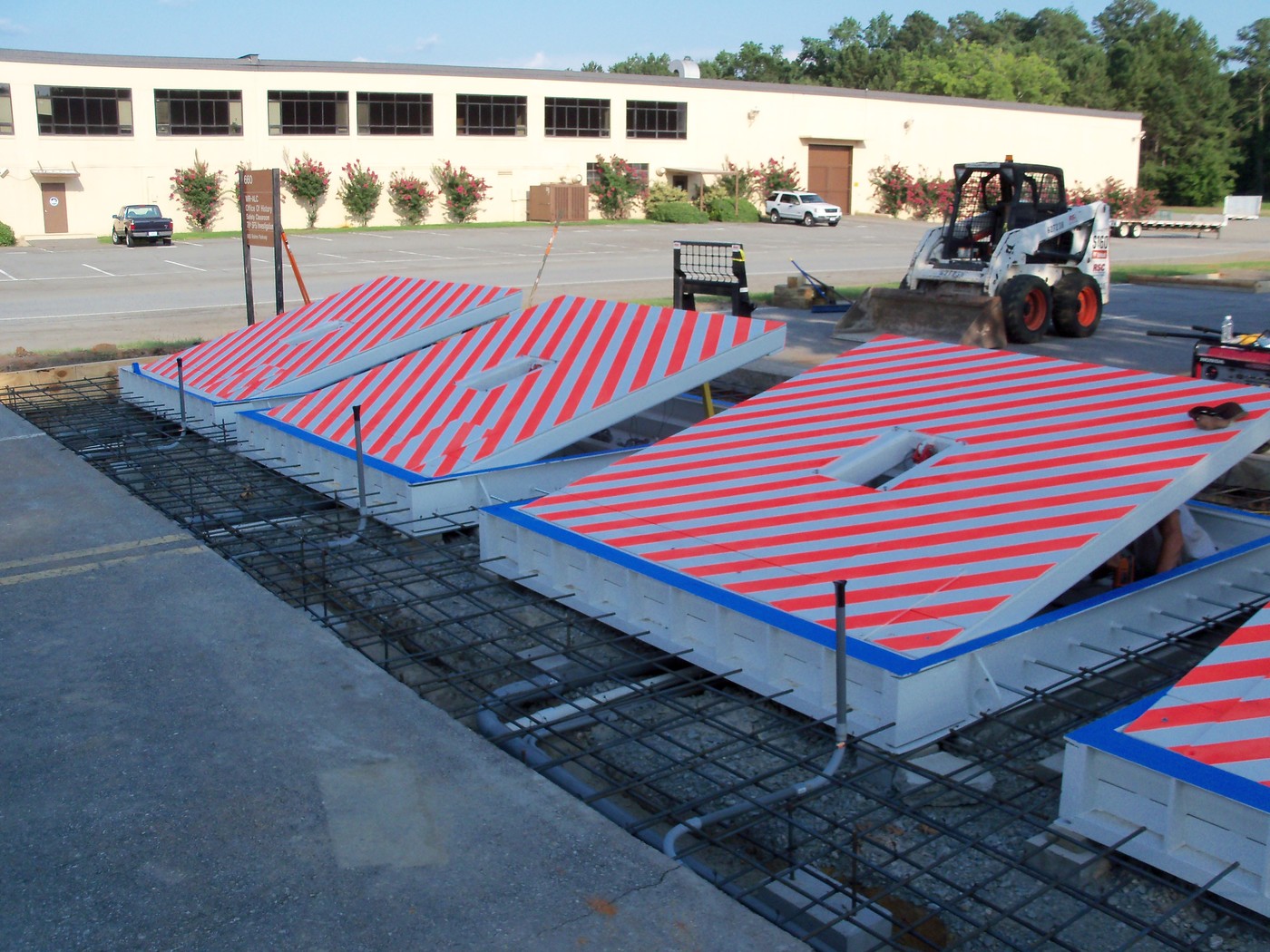The Ultimate Guide To Wedge Barriers
Our Wedge Barriers PDFs
Table of ContentsAll about Wedge BarriersAll about Wedge Barriers


18 may be done a lot more rapidly, easily, and price efficiently. FIG. In certain personifications, the anchor 30 may be a steel structure including plates, beams(e. g., I-beams ), and/or other frameworks that are safeguarded within the foundation 14, which might be concrete. At the surface area 12, a top side 28 of the anchor 30 might be at least partially revealed
, therefore making it possible for the add-on of the barrier 10 to the anchor 30. g., threaded holes)in one or even more beams or plates of the support 30 might be revealed to the surface 12. In this manner, bolts 32 or other mechanical bolts may be utilized to protect the barrier 10 to the support 30. As the obstacle 10 is placed to the surface area 12 of the structure 14, collection of debris and other product underneath the barrier might be decreased, and parts of the bather 10 may not be subjected to below quality environments. As shown by referral numeral 52, the lifting system 50 includes parts got rid of beneath the wedge plate 16. As an example, the components 52 beneath the wedge plate 16 might consist of an electromechanical actuator, a webcam, several cam surface areas, etc. Additionally, the training device 50 includes a spring assembly 54
The springtime rod 58 is combined to a cam(e. g., web cam 80 displayed in FIG. 4) of the training device 50. The springtimes 60 disposed concerning the spring pole 58 are held in compression by spring sustains 62, consisting of a repaired spring support 64. That is, the fixed spring assistance 64 is taken care of family member to the foundation 14 and the rest of the bather 10.
Everything about Wedge Barriers
g., spring assistance 65 )may be fixed to completion of the spring pole 58 to enable compression of the springtimes 60. As the springs 60 are pressed in between the spring supports 62, the springtime assembly 54 creates a force acting on the web cam combined to the spring pole 58 in a direction 66. For instance, the remaining pressure related to
the web cam to release the wedge plate 16 click here now may be provided by an electromechanical actuator 84 or various other actuator. The spring assembly 54 and the actuator 84(e. g., electromechanical actuator)might run with each other to translate the camera and raise the wedge plate 16.
As mentioned above, the spring setting up 54 exerts a consistent force on the camera, while the electromechanical actuator might be controlled why not try these out to exert a variable force on the web cam, therefore enabling the training and lowering( i. e., deploying and withdrawing )of the wedge plate 16. In certain embodiments, the constant force applied by the springtime setting up 54 may be adjustable. g., electromechanical actuator) is handicapped. As will certainly be appreciated, the springtime setting up 54 may be covered and secured from debris or various other elements by a cover plate(e. g., cover plate 68 received FIG. 4) that may be substantially flush with the elevated surface 38 of the foundation 14. As pointed out over, in the released placement, the wedge plate 16 serves to block gain access to or traveling past the barrier 10. The barrier 10(e. g., the wedge plate 16 )might obstruct pedestrians or automobiles from accessing a residential property or pathway. As gone over over, the barrier 10 is connected to the support 30 safeguarded within the structure 14,

front braces 71. Therefore, the linkage assemblies 72 may pivot and turn to allow the collapse and expansion of the affiliation settings up 72 during retraction and implementation of the bather 10. The link settings up 72 reason activity of the wedge plate 16 to be limited. For instance, if a browse around these guys vehicle is traveling towards the deployed wedge plate 16(e. For example, in one situation, the security legs 86 might be expanded duringmaintenance of the barrier 10. When the safety and security legs 86 are deployed, the safety legs 86 sustain the weight of the wedge plate 16 against the surface area 12. Because of this, the lifting device 50 might be shut off, serviced, eliminated, changed, etc. FIG. 5 is partial viewpoint view of an embodiment of the surface-mounted wedge-style barrier 10, illustrating the cam 80 and the web cam surface areas 82 of the training system 50. Particularly, two cam surfaces 82, which are described as reduced camera surfaces 83, are positioned below the cam 80. The lower web cam surface areas 83 might be dealt with to the surface area 12 (e. As an example, the reduced cam surface areas 83 and the placing plate 85 might develop a solitary piece that is secured to the support 30 by screws or various other mechanical fasteners. Additionally, 2 camera surface areas 82, which are described as top web cam surfaces 87, are positioned above the cam 80 and coupled to (e. In other embodiments, stepping in layers or plates may be positioned between the surface area 12 and the reduced web cam surface areas 83 and/or the wedge plate 16 and the top webcam surfaces 87 As discussed above, the web cam
80 converts along the camera surfaces 82 when the wedge plate 16 is raised from the withdrawed position to the released placement. In addition, as stated over, the spring assembly 54 (see FIG. 3 )may offer a pressure acting upon the cam 80 in the direction 102 through springtime rod 58, which may decrease the pressure the electromechanical actuator 84 is needed to use to the camera 80 in order to actuate and raise the wedge plate 16. 1 )to the deployed placement(see FIG. 4). As shown, the webcam 80 consists of track wheels 104(e. g., rollers), which contact and convert along the cam surfaces 82 throughout operation.